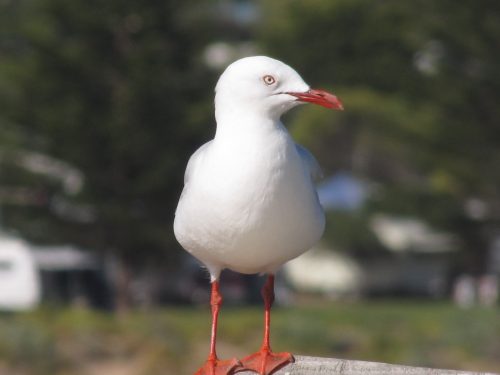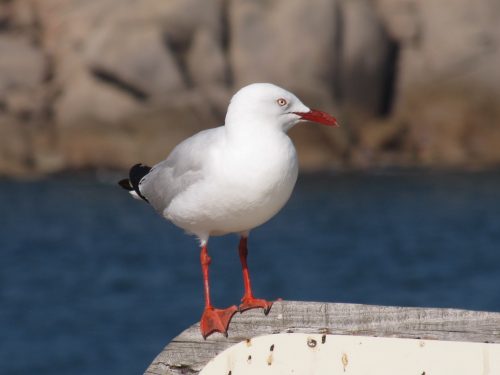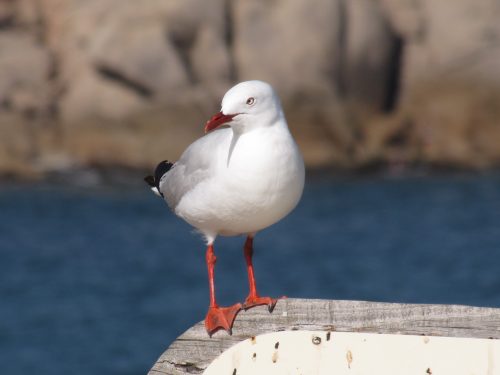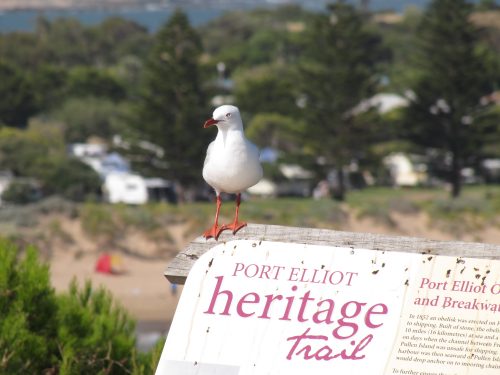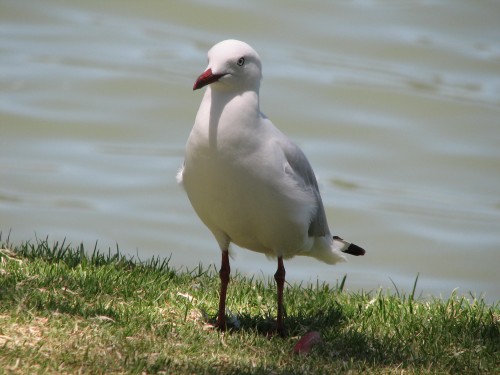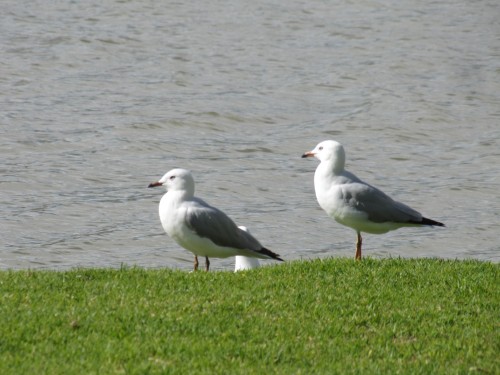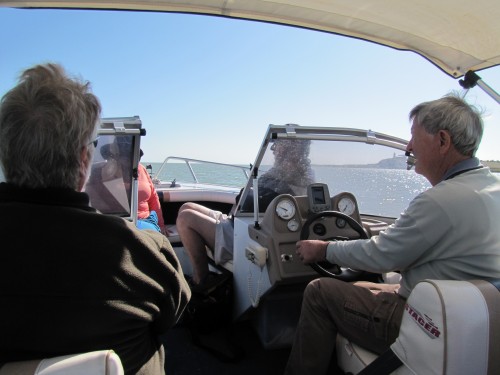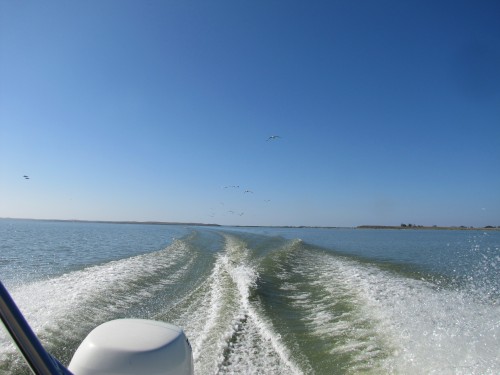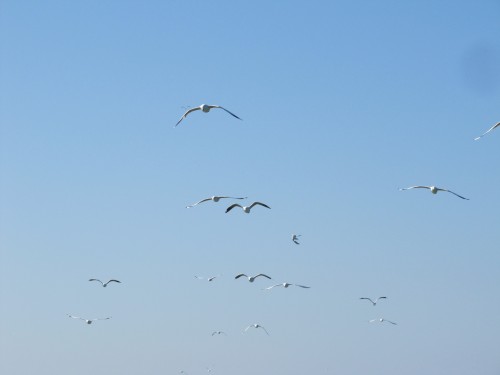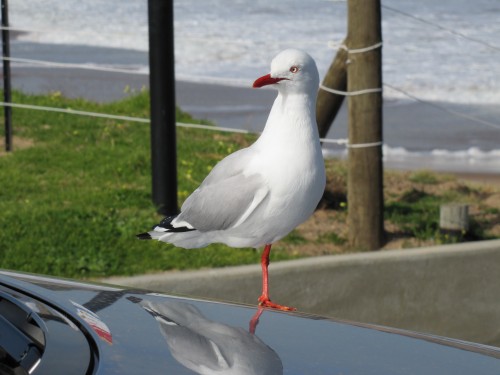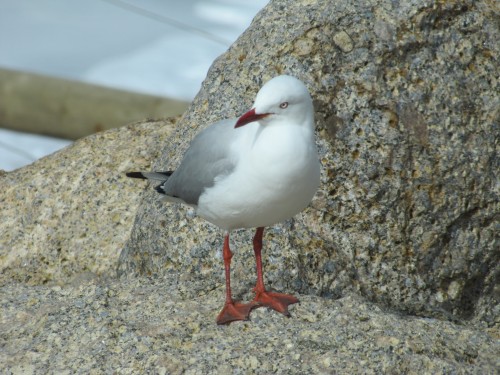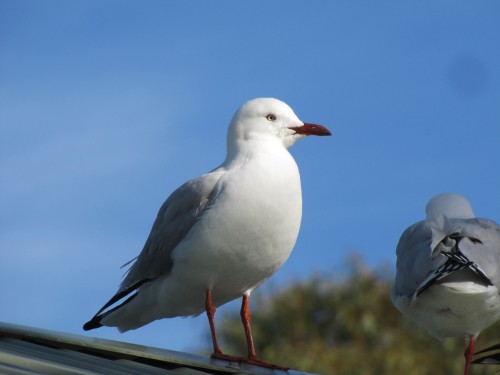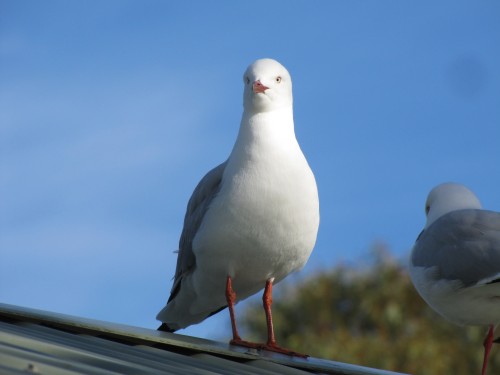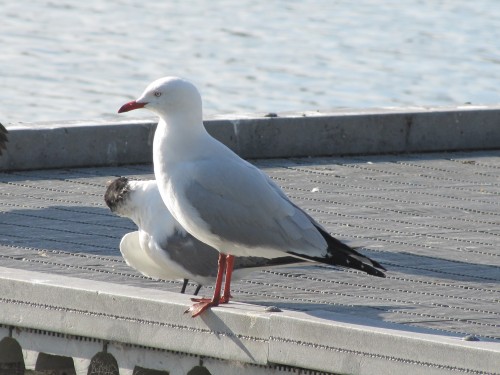Nice pose for a Silver Gull
Earlier this week my wife and I celebrated another anniversary. My – how the years have flown by. We always try to do something special for our anniversary and agreed that the weather was suitable for a long drive and a picnic, finished by dinner at a favourite restaurant. After an early morning chat on the phone with our grandchildren, we set off towards Milang, which is about 50 kilometres from our home. We stopped at the local bakery to buy our lunch, a Cornish pasty each, and a large lamington to share.
We took our lunch down to the shore of Lake Alexandrina and had a picnic lunch on the lawns there. The largest river system in Australia, The Murray-Darling Basin, flows into this large lake, which in turn empties into the Southern Ocean near Goolwa. While we ate our lunch we watched some children playing with their dogs and on the playground. I took note of the birds I could see or hear, but things were rather quiet on that front – until someone disturbed a large flock of very noisy Little Corellas nearby. I have often thought that I would like to stay in the local caravan park right next to the lake, but I concluded that you would not need an alarm clock; the parrots would see that you woke at dawn, or even at first light.
From Milang we drove on towards Goolwa and explored Hindmarsh Island – but I will write about that part another day. Later in the afternoon, we stopped at Horseshoe Bay, Pt Elliot. This small town on the south coast of the Fleurieu Peninsula is a popular holiday destination, being just over an hour’s drive from Adelaide. We stopped for a cuppa and some homemade biscuits in the car park at the lookout. I parked so that we had a great view over the bay. In South Australian history, this spot is quite important. Encounter Bay, which stretches for some distance to the south-east, was where English explorer Captain Matthew Flinders and the French explorer Nicolas Baudin met in April 1802.
While we were having our cuppa, a solitary Silver Gull settled on an interpretive sign just in front of our car. It obligingly posed for a series of photos which I am sharing here today. Silver Gulls are the most common gull found all around the coastline of Australia. It can also be seen far inland where suitable bodies of water exist, such as river systems, lakes, reservoirs and swamps. It can be very common in large numbers at rubbish tips, ovals, picnic grounds and beaches.
Further reading:
Silver Gulls behaving oddly
This afternoon while watching the cricket on television my wife called to me from the garden. A flock of about 20 birds were circling in the air above our five acre property here in Murray Bridge, South Australia. I quickly grabbed my binoculars and headed outside.
For the next ten minutes or so the loose flock of Silver Gulls soared on the breeze over head, circling around many times. They kept this up mostly silently with just an occasional soft contact call – nothing like their normal raucous, far reaching cry which is a quite familiar call. The whole time they stayed overhead near the shed, circling constantly over about a fifty metre radius. I am quite puzzled as to what they were up to. Perhaps they were feeding on flying insects but I couldn’t see exactly what they were doing, despite being able to observe individuals as they flew. Strange.
Silver Gulls are widespread throughout Australia and are very common along the entire coastline, along river courses, around lakes, dams, reservoirs, swamps and any suitable habitat and are usually associated with water, but not always. We are about five kilometres from the River Murray but we have some fly over our property every month of so, sometimes in large flocks of 50 to 100, usually quite high in the sky. This is the first time I can recall them coming so close to the ground; the flock stayed about 5-10 metres above the ground at all times.
A day on the river
Last weekend we were invited by friends to take our caravan to Meningie on the shores of Lake Albert here in South Australia. Meningie is just an hour’s drive from home, so it wasn’t a long road trip. The weather forecast looked promising for a good long weekend.
As we drove down the main street of Meningie we noticed that the local Progress Association had arranged for a Food Fair on the lawns along the shore of the lake. After setting up our caravan we drove the short distance from the park to the fair. Our treat for dinner was a Coorong mullet sandwich.
As we were eating our friends Rod and Janet who live nearby joined us at our table. They asked us about our plans for the weekend, offering to take us out for a trip on their ski boat – not for skiing but for touring the nearby lakes and river. How could we refuse such a kind, generous offer?
We set off at 9 o’clock next morning, heading straight across Lake Alexandrina at 40kph; quite exhilarating. As we went along I noticed quite a few birds following the wake of the boat. Most of them were Silver Gulls. The following photos show some of them.
One legged Silver Gull at Horseshoe Bay
Every now and then I see a gull with part of a leg missing. The birds with this disability were probably attached by a fish or shark at some stage. Despite not being totally intact, they seem to manage quite well.
On a recent visit to the south coast of South Australia – Horseshoe Bay near Victor Harbor, we saw the gull featured above with only one leg. again, it seemed to be in top notch health and coping really well.
Below I have included a few more photos of Silver Gulls taken at the same time. This continues my photographic fascination with this very common species.
Silver Gulls, Sturt Reserve, Murray Bridge
I know that Silver gulls are very common throughout Australia, but I must admit that I always enjoy taking photos of them. Generally, they are not at all afraid of humans (except for those over-active little versions who insist on chasing them), so they are usually very easy photographic subjects to practice on. On my recent visit to the local Sturt Reserve I managed several acceptable shots of some of the gulls, as shown here on this post today.
Silver Gulls, despite often acting as garbage disposal units on beaches, river banks and picnic areas, are quite beautiful birds in my view. They have such clean lines and pure colours. I usually forget their scavenging habits and concentrate on the positive aspects of their appearance.
